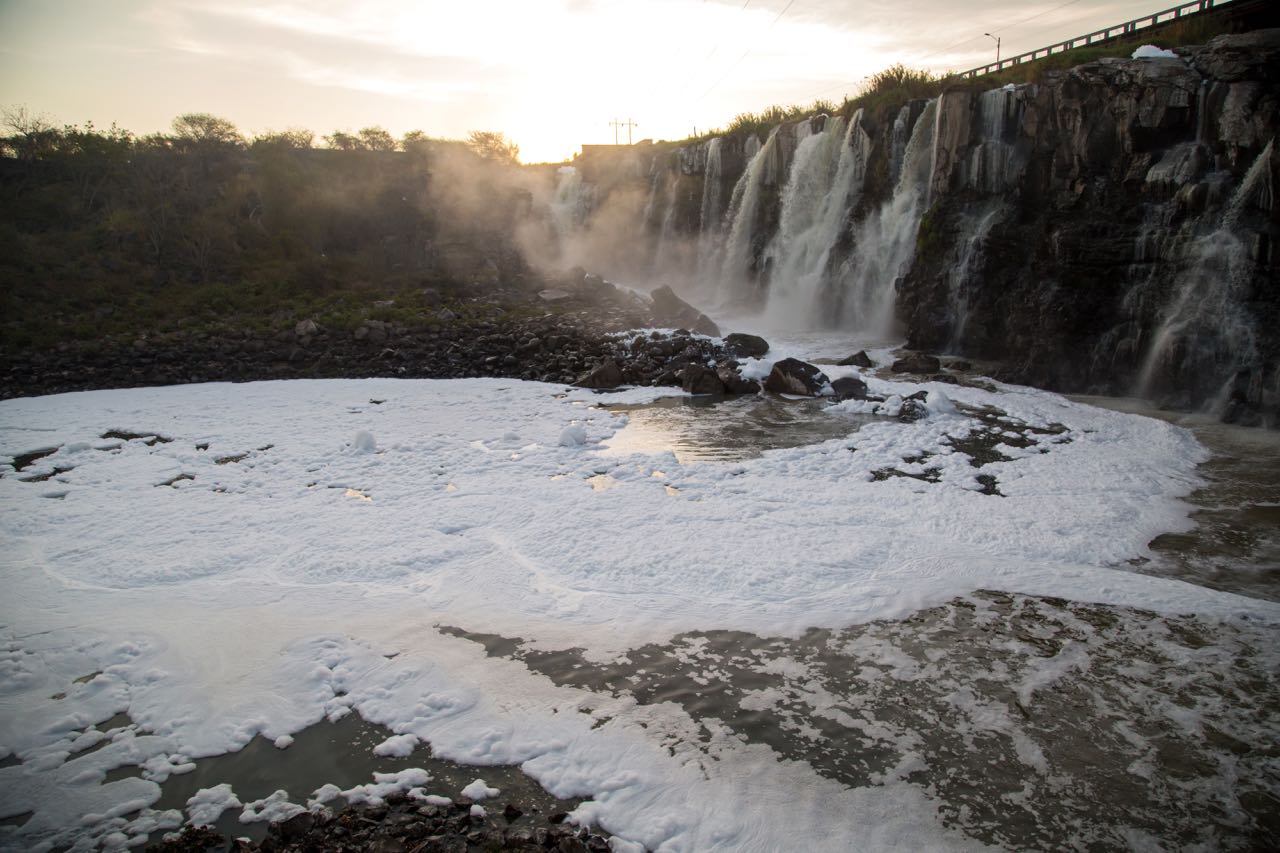
By Seila Montes
Back in the 1950s, day after day, Enrique and his friends would go straight to the river. They would climb the pipe that jutted out of the old hydroelectric plant of El Salto —completed in 1893, one of the first in Mexico— and from there, they would jump into the river to catch eels. “Sometimes, the net was so full, we didn’t have the strength to pull it out,” he remembers. If they were lucky, they would catch some other species inhabiting the river, such as carp, crab or mojarra.
In the background, they would hear the powerful roar of the El Salto waterfalls, formerly known as “The Mexican Niagara,” where local newlyweds and overseas couples would travel to see the magnificent cascades. The old belief was that the falls would bring good luck in their love and marriage. As Enrique remembers 50 years later, "We were poor, but we were very well fed,” as mango, avocado, quince and guava would grow along the banks of the river.
In the 1960s, however, industrial corridors began forming in the area and manufacturers began using the river as their personal dump. Nowadays, the only species that survives in the river is tilapia, nicknamed the “cockroach of the river” for its invasive and resistant nature. Enrique calls it the “Fair Revenge of the Nemesis”—as man contaminates the river, the same river gives poisoned food in return.
ArrayEnrique Enciso observing the falls of the polluted Santiago River (Photo: Seila Montes)
The pollution levels have soared to such a height that the Santiago River, which starts in Lake Chapala and runs for about 562 kilometers (350 miles) to cover six states until emptying into the Pacific Ocean, is now the most polluted in Mexico, and one of the most contaminated in Latin America. Among the mega-corporations dumping toxic waste in the area are Hershey's, Huntman, IBM, and Nestlé.
Mexico’s Environmental Secretariat proclaims that 70 percent of the companies comply with voluntary audits, but companies are under no obligation to allow state inspectors into their facilities. Although some companies like Hershey’s do have their own water treatment facilities, this loophole makes it impossible to calculate what percentage of water is actually being treated and how much waste gets discharged into the river. A 2011 IMTA (Mexican Institute of Water Technology) study found that 87 to 94 percent of companies do not comply with discharge regulations.
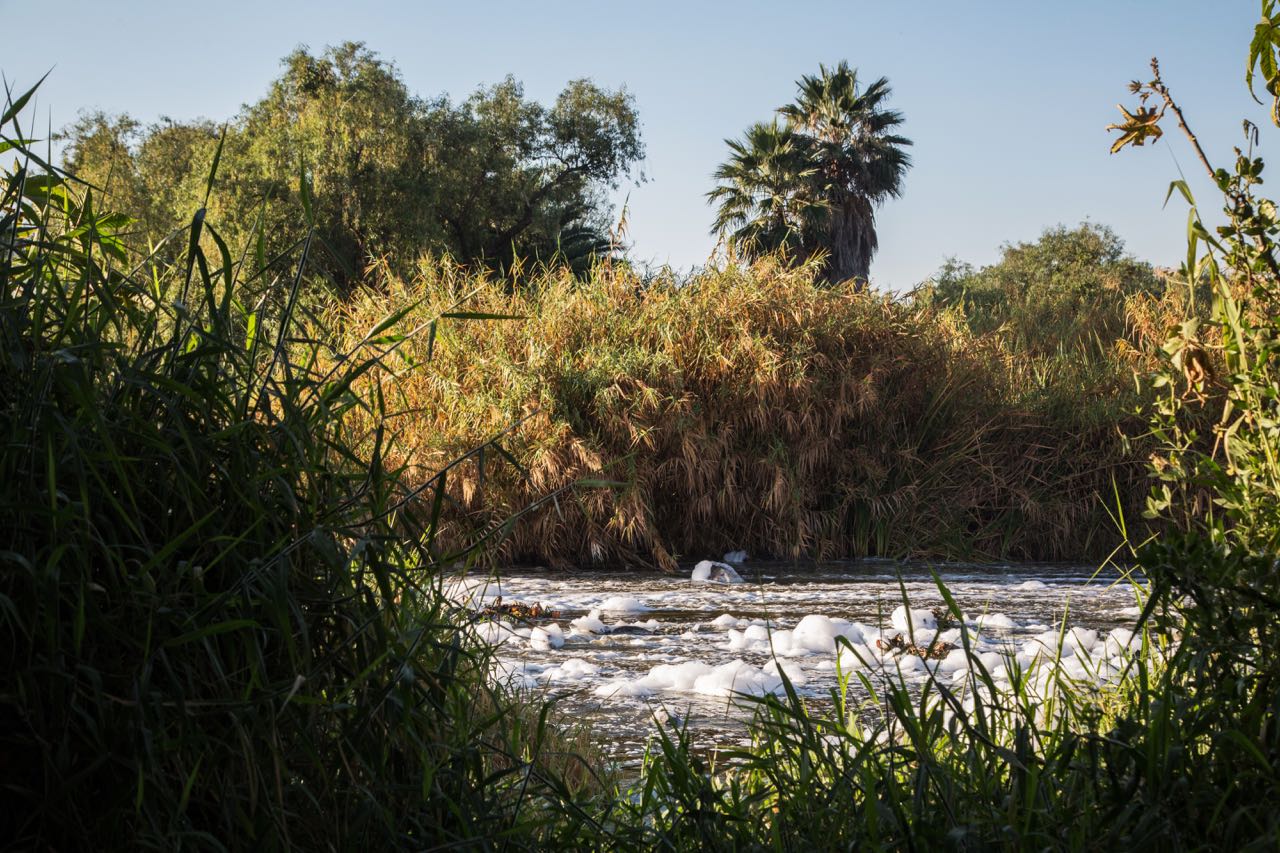
The Santiago River flows loaded with toxic pollution (Photo: Seila Montes)
Another company unloading its leachate into the river is the Los Laureles waste dump (operated by Caabsa Eagles), which receives waste from the city of Guadalajara and surrounding municipalities. Ever since Caabsa Eagles has been in charge, Los Laureles has been the most fined waste dump in Mexico, according to the State Attorney's Office for Environmental Protection. Seated on municipal land, the garbage dump receives about 6,000 tons of trash per day, covering around 82 hectares (200 acres). Now at about 50 meters high, it continues to grow in height and runs the risk of collapse.
In 2008, when the concessions to the Caabsa Eagles company was about to expire, the residents of El Salto rallied for the closure of the garbage dump, which was still discharging leachate into the Santiago River. They staged protests to decry the pestilence. On the same night after the protests, a fire broke out at the garbage dump, producing a toxic black cloud over the town. Locals could not leave their homes for three days and schools had to suspend classes. Despite all this, the government went on to approve another 25 years of concessions to the same company.
According to a Greenpeace study, among the toxic substances found in the river are arsenic, onifenol, octifenol, chloroform, benzenes, and cyanide. These compouds, when in high concentrations, can have dangerous impact on aquatic life and humans. Many of these chemicals are carcinogenic and can cause hormonal disruptions, fetal malformations, and damage to the male and female reproductive systems. An IMTA study found 1090 toxic chemicals in the river.
In 2008, 8-year-old Miguel Ángel López Rocha died 19 days after falling into the river. While being treated in a coma, the level of arsenic found in his body was 51 micrograms, while the maximum toxicity level is about 12 micrograms. In response to the media outcry after the death of Miguel Ángel, the government of President Felipe Calderón decided to build a water treatment plant called “El Ahogado.”
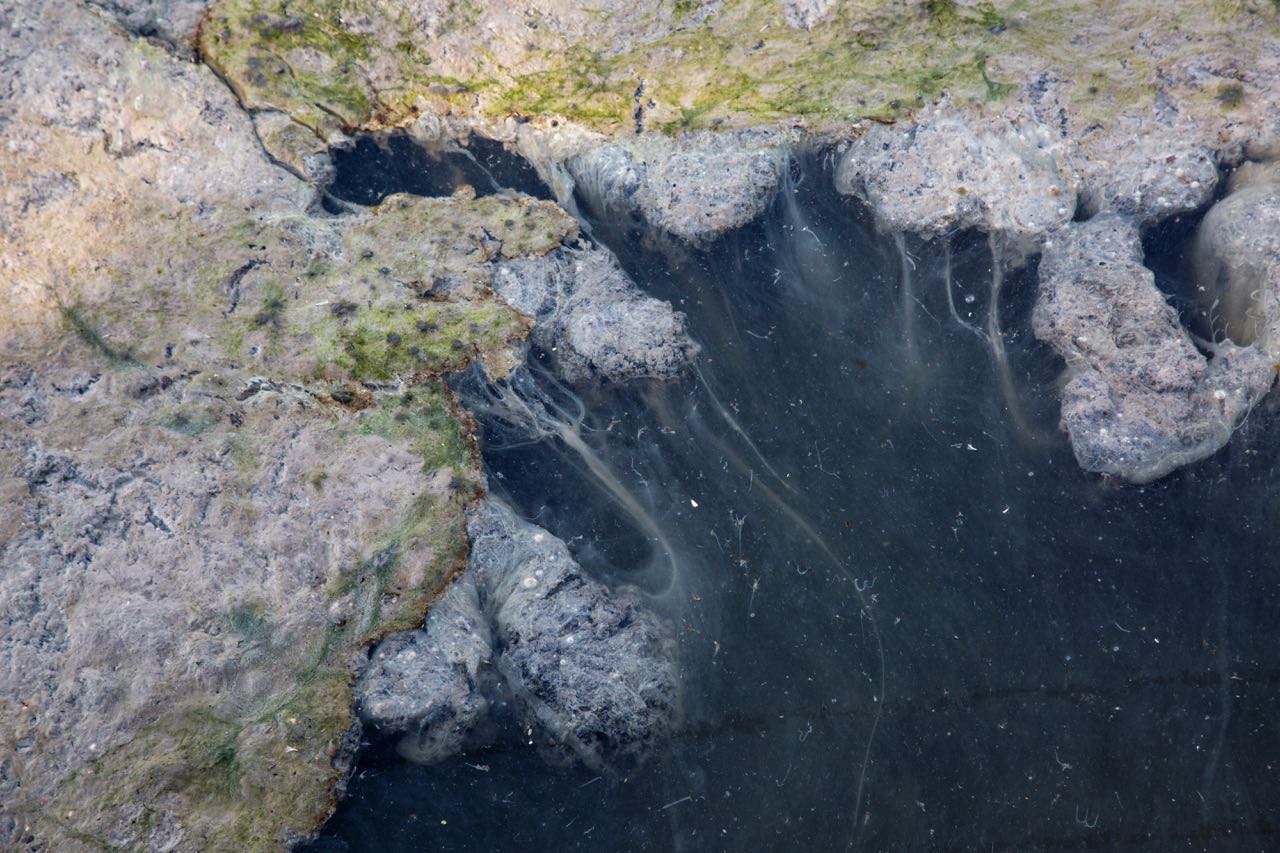
Polluted water at the El Ahogado Dam (Photo Seila Montes)
The Jalisco state government tried to soothe the locals and the media by sending out the message that they had found a remedy through the El Ahogado water treatment project. With a cost of almost one billion pesos, the plant was designed to process up to 2,250 liters of water per second, but, to the disappointment of activists, was only able to treat sewage—not heavy metals. Even more frustrating to local families was the fact that the plant was only designed to treat less than 25% of the sewage being discharged in the metropolitan area. Since it only treats a small percentage of sewage, not heavy metals, the El Ahogado water treatment plant was built without a full study of the industrial heavy metals being dumped into the river.
When the plant detects a heavy metal, an alarm is activated to stop the process, and that same water is thrown into the river by another conduit as it arrives. A major criticism of the plant project is that the true beneficiaries were the construction companies and politicians who lined their pockets with the close to one billion pesos in tax money.
According to a Greenpeace report, the “treated” water that is discharged into the river by the El Ahogado plant contains 101 isolated organic chemical agents, some considered high risk for human health and the ecosystem; 22 of them are not even regulated in Mexico.
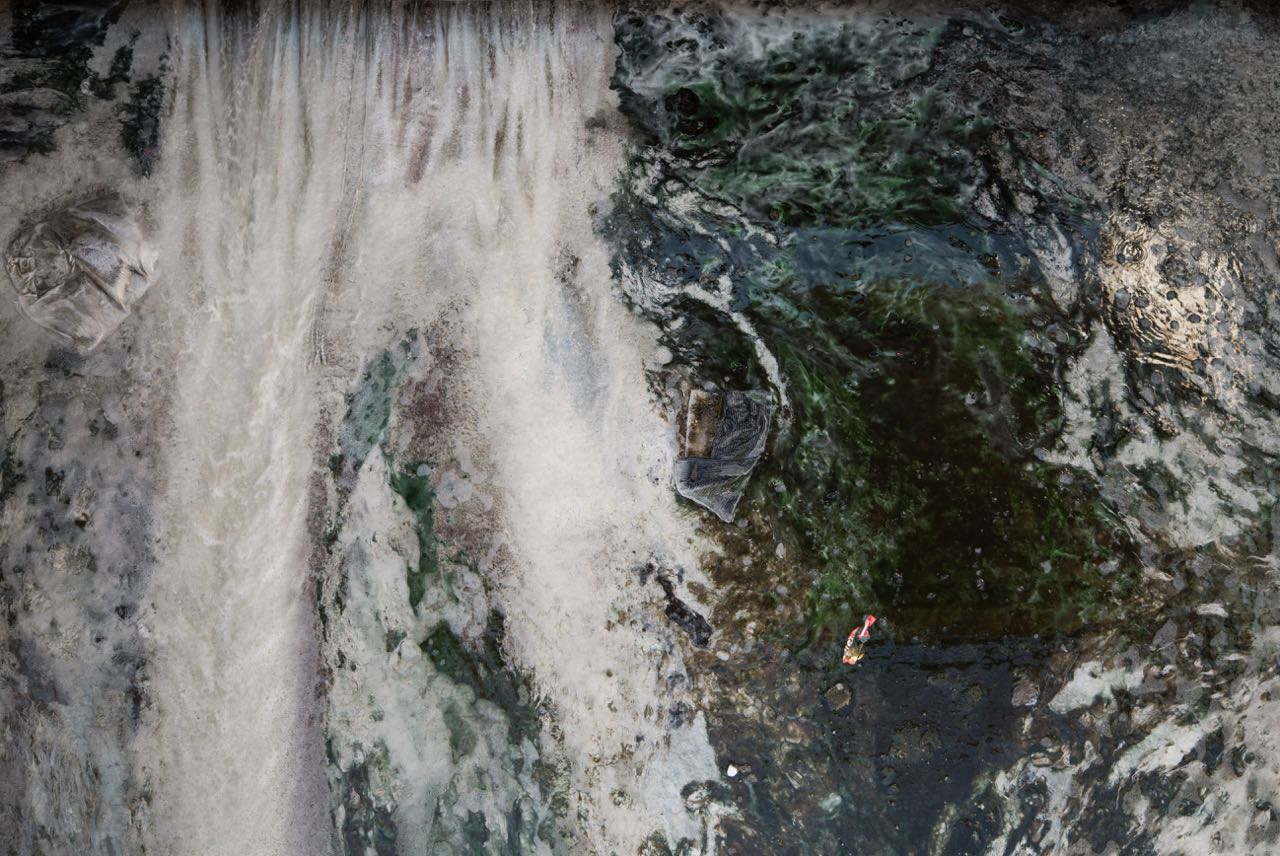
Polluted water at the El Ahogado Dam (Photo: Seila Montes)
Meanwhile, the city of Guadalajara has one of the highest rates of kidney disease in all of Mexico. It has been proven that exposure to metals such as arsenic can cause kidney damage. Also extremely high is the number of young people in the area who are suffering from skin diseases, respiratory problems, and even cancer. Although there is currently no authoritative study showing how many of these medical cases are actually related to the river contaminants, there are several reliable studies showing the level of heavy metals in the water with which the locals wash themselves. Many adolescents and adults in the area also comment that, as children, they would often play with the strange foam blown into the school yard by the wind. They were oblivious to all the toxic chemicals they contained.
There are cases like that of José Daniel, a 26-year-old man who, at the age of 21, began to feel severe headaches that kept him awake for an entire week. When he finally arrived at the hospital, he was found to have kidney failure and needed an emergency hemodialysis. He also needed a kidney transplant urgently. Having no resources or insurance, José found an NGO to support and help him pay for part of the transplant. It has been three years since the operation and he will have to continue taking medication for the rest of his life. Eerily enough, José has a cousin the same age who also needed a kidney transplant. Several of his classmates have even passed away from diseases he attributes to the polluted river. Others become sick much younger.
Chuyito, a 9-year-old boy who received a kidney transplant two years ago, had already lost hope for living after spending his childhood from hospital to hospital until finding an organ donor. The cost of the medication he will have to take for the rest of his life is around $200 US dollars per month. His mother cannot afford it, but luckily he receives help from a local NGO.
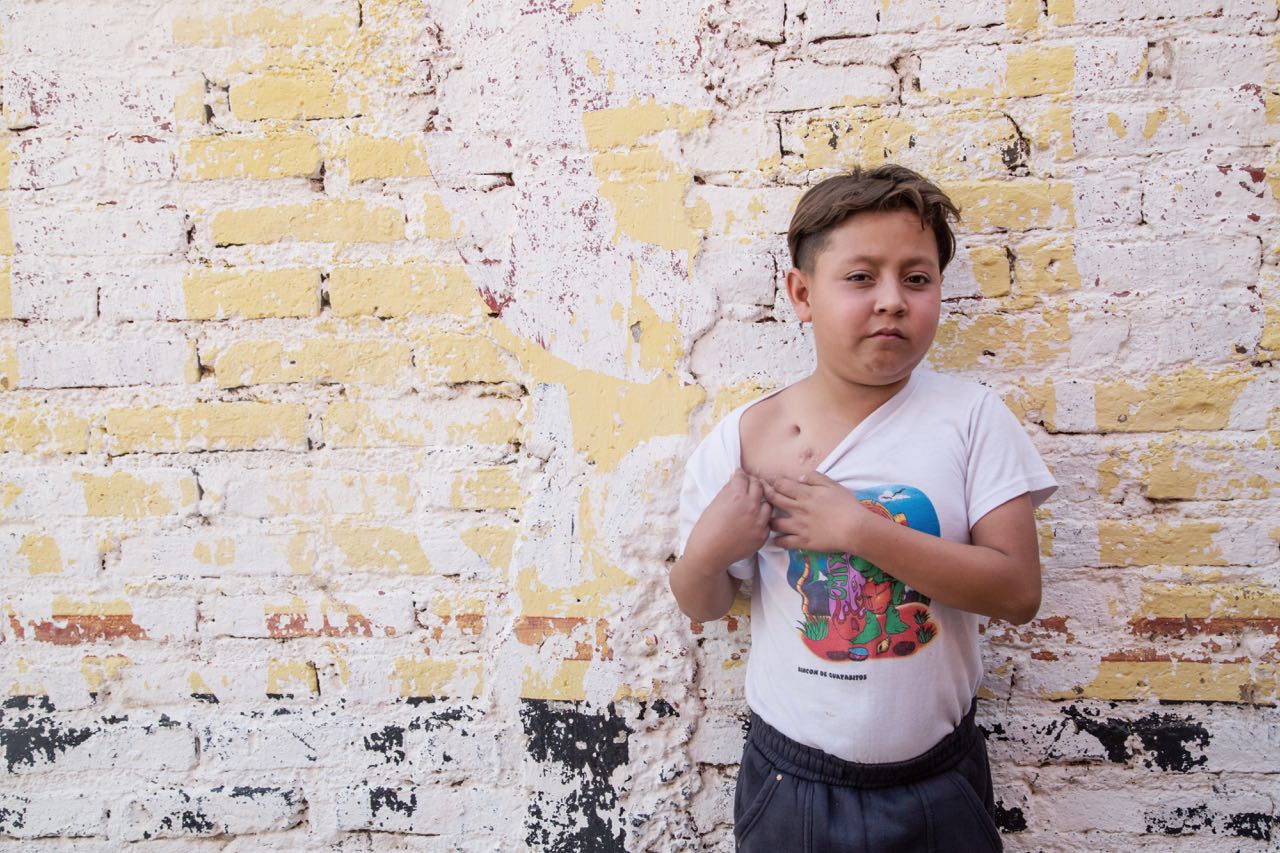
Chuyito (Photo: Seila Montes)
Not all cases are directly related to water. About eight years ago, Pedro applied for a job at Urrea, a company near his home that manufactures tools. After the job interview, he stepped outside the property where he encountered a mound of white powder. Unlucky enough to stumble and fall on top of the mystery substance, he soon found out it was a product being used to treat metals. When the chemicals came into contact with his body, Pedro’s skin began to “melt.” Since then, Pedro has not been able to work, as the scars on his hands prevent him from having sufficient mobility. After taking the company to court, he was only able to win 50,000 pesos (about $2500 US dollars), which all went to cover attorney fees.
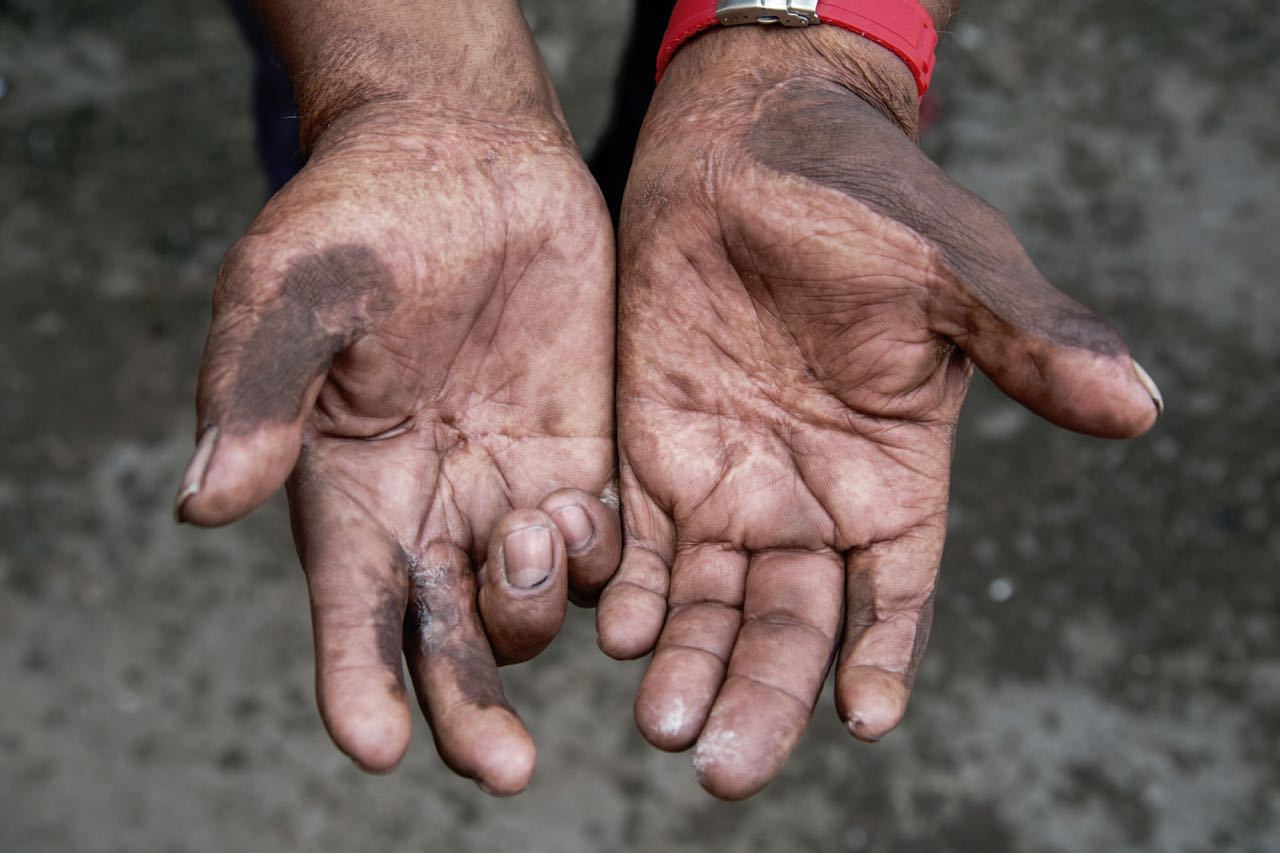
Pedro's hands destroyed by toxic compounds (Photo: Seila Montes)
Although there are currently no solid studies computing how many people have fallen sick due to the river contamination, there has been no governmental effort to conduct a public health study on the issue. In the El Salto area, 2 new cemeteries have been built in the last 10 years. Walking through one of them, one can see that from the 1970s until now, the ages of death drop lower and lower.
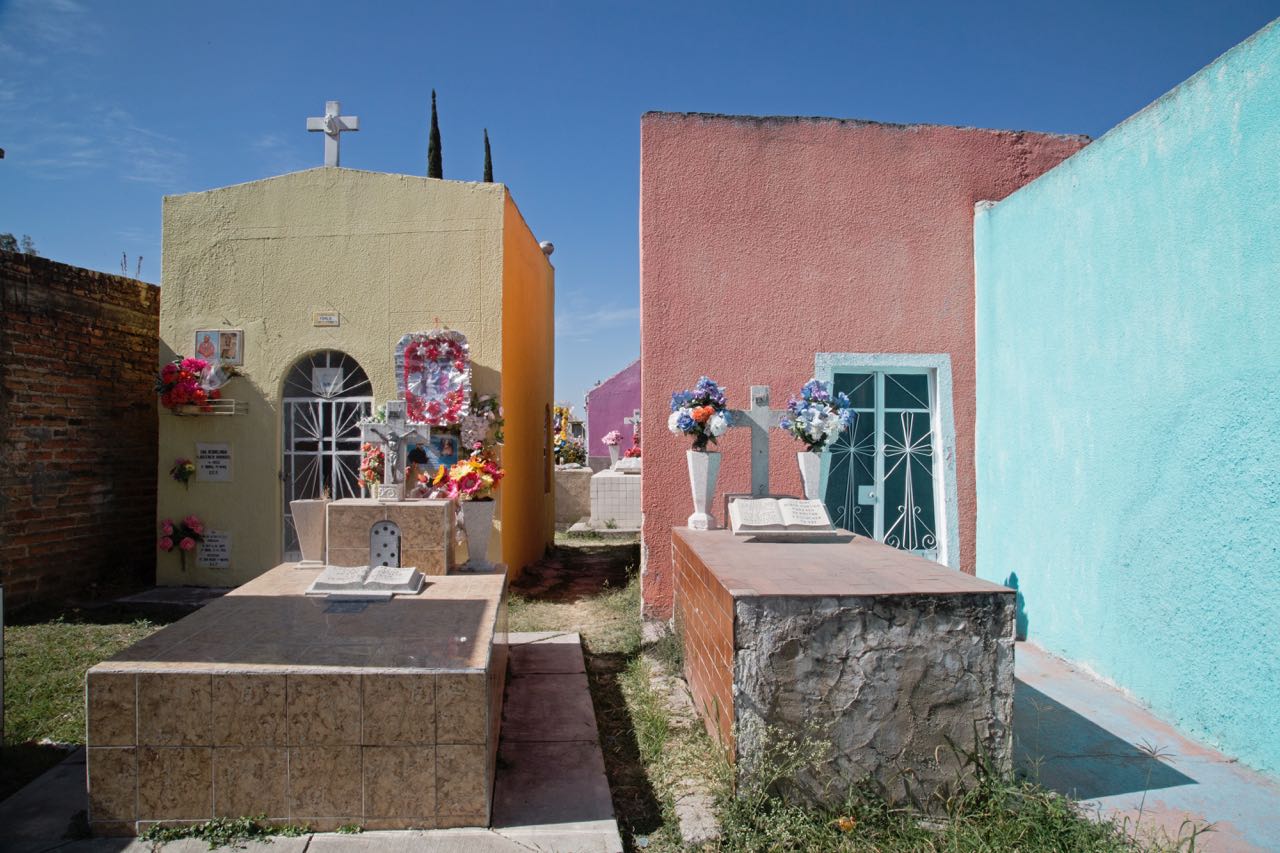
El Salto Cementery (Photo: Seila Montes)
In response to the serious problems suffered by the inhabitants of El Salto and its surroundings, Enrique Enciso and Graciela González, together with close relatives and neighbors, have created the NGO “Un Salto de Vida.” This family of activists devotes a large part of their lives to fighting for justice—not only for themselves and their loved ones, but also for some of the most fundamental human rights: The right to safe and clean water, the right to protect a river and its inhabitants who have enjoyed it for thousands of years, and the right to not be killed off by unbridled capitalism.
Seila Montes is a Spanish photojournalist who has worked on several international environmental justice projects.